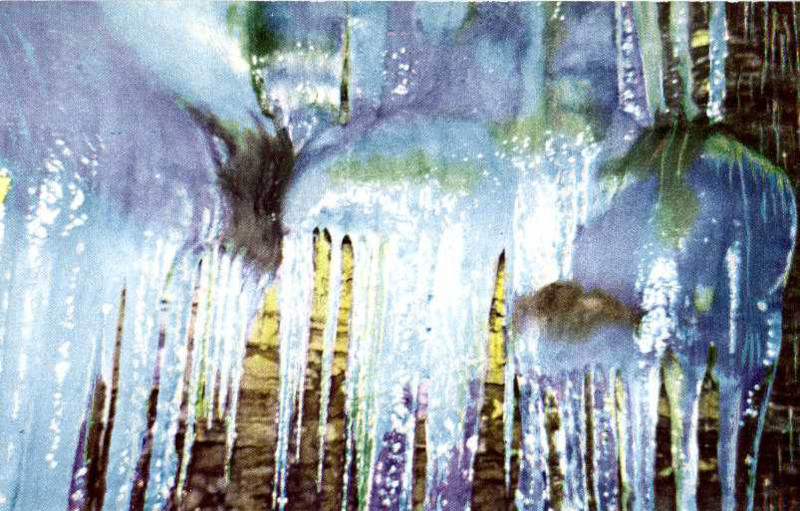Coudersport Ice Mine Facts
- The Coudersport Ice Mine is a phenomenon of geology that appears to defy logic. The cave stays empty during the winter, yet during the summer it fills with huge quantities of ice
- This remarkable ice cave was discovered in 1864 and was actually used to store perishable foods and various other materials shortly after its discovery. The cave is a popular attraction for tourists in the area.
- Geologists have proposed numerous theories to explain the bizarrely “backward” freezing process. None of these theories have been conclusively proven, however. This site remains one of Nature’s many mysteries.
- A steady, gentle breeze of cold air emanates from the cave during the spring and summer. In fact, it was this breeze which led to its discovery.
Related Articles
Coudersport Ice Mine Geology
The Coudersport Ice Mine is part of the northernmost section of the Appalachian Mountains. These mountains lie in the eastern portion of the United States.
There are numerous overlapping fissures riddling this section of the range which is part of the ancient Lock Haven Formation
The cave itself is rather small, measuring only 8 ft (2.4 m) wide, 10 ft (3.1 m) long, and 40 ft (12.2 m) deep. The ice forms in random shapes and sizes, including enormous icicles. Many icicles are as much as 3 ft (0.9 m) thick, and 25 ft (7.6 m) long.
The ice itself is generally remarkably clear.
This is the largest ice cave east of the Mississippi River, though there are other, smaller ones as well. It is also the most mysterious of them all. Nature loves a good mystery.
Coudersport Ice Mine Location and Patterns
Located in a rural area near Coudersport, Pennsylvania, in the United States, Coudersport Ice Mine is certainly an anomaly of Nature.
Warm air is trapped in the surrounding fissures in the stone during the summer – according to the leading theory, at least. Following this, cold air forces the warm air into the cave during the winter, then becomes trapped itself. The incoming warm air then melts the ice that is present.
Warm air generated in the spring and summer forces the trapped cold air into the cave during the summer, thereby repeating the cycle. This theory remains unconfirmed, however.
The cave is currently under regular scientific study.
Features Sharing Its Region
Check out our other articles on 5 Fabulous Gulf of Mexico Fish, Australian Sea Lion, Komodo Island, Sturt’s Desert Pea, Evening Cicada, Weedy Seadragon, Little Auk, Blue-lipped sea krait

